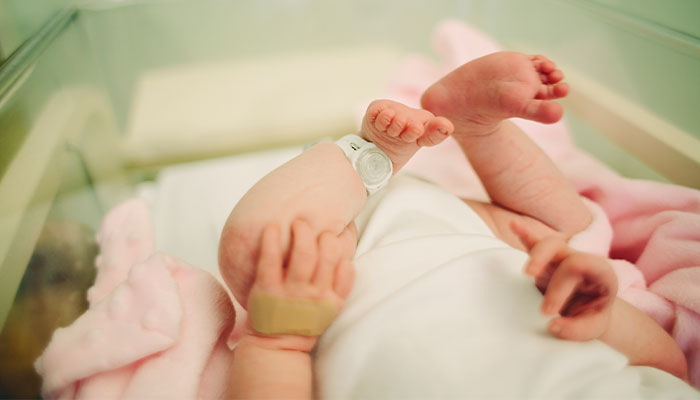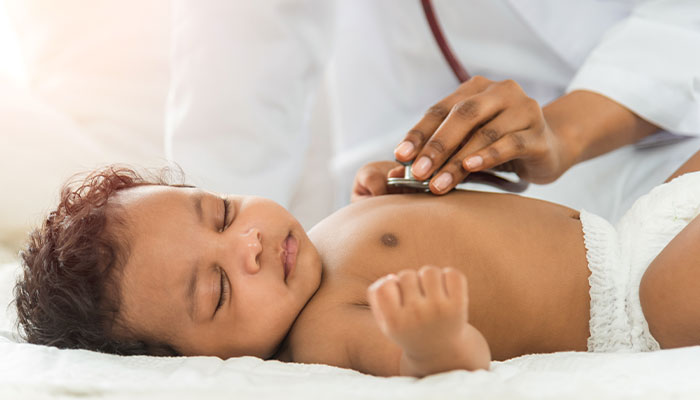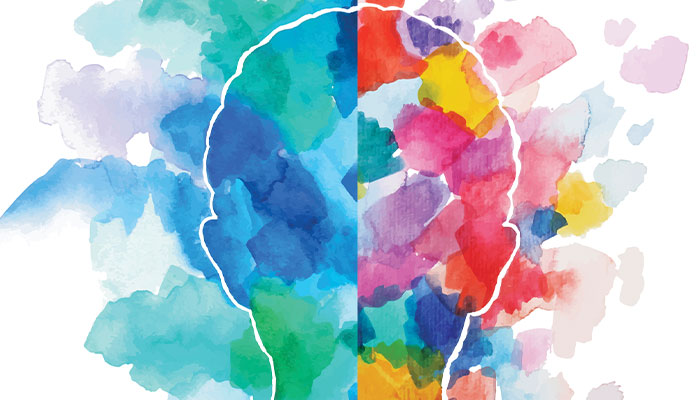An international study led by Macquarie University researchers has developed the first definitions and set of agreed criteria for acute and chronic pain in critically ill children under the age of one.

New understanding: A baby in pain doesn't always cry, says Dr Emre Ilhan.
The study focuses on babies being treated in neonatal intensive care units (NICU) and high dependency units (HDU). Previous research has shown babies in these units may experience up to 750 painful procedures during a single stay, ranging from blood tests to surgery.
Study leader Dr Emre Ilhan from the Department of Health Sciences says pain has historically been difficult to assess in babies because they are unable to provide verbal feedback in the way older children or adults can.
“We might imagine that a baby in pain would cry, but sadly that isn’t always the case,” Ilhan says.
We know now that babies are affected by pain in different ways than adults.
“In pre-term babies, their motor systems aren’t developed enough, so they don’t even know yet to cry.
“In one of our studies, pre-term babies weren’t showing any of the expected behavioural cues like crying or making faces, but they were showing physiological signs like rising heart rate and blood pressure.
“If the majority of admissions had been using crying as the sign for pain, you can imagine how under‑treated it’s been.
“It’s something you try not to think too much about, that so much pain has gone untreated.”
No pain relief for babies until 1987
Conducted over four stages, the study used expert panels to develop definitions of pain for infants and match clinical characteristics with them. It then brought together neonatal clinicians to develop clinical case scenarios that were tested in NICUs around the world.

Pain barrier: The general thinking used to be that if a person or animal wasn’t verbalising pain, it must mean they weren’t feeling it.
Definitions have now been developed for both acute and chronic pain, with a list of indicators including crying and grimacing, muscle tone, heart rate, blood pressure and use of oxygen.
Until the 1980s, it was a common belief even among surgeons that infants under a certain age were not capable of feeling pain, and in any case, that opioids could be harmful.
This meant babies were having surgery with no pain relief during surgery or afterwards.
- '25 blows to the head': New help for sport head trauma patients
- Exhibition spotlights 206 years that changed the world forever
A 1987 study changed that, and babies immediately began receiving analgesia during and following operations.
However, it took until 2020 for the clinical definition of pain to be updated to explicitly include animals and non-verbal humans, including newborns younger than four weeks, babies under the age of one, and adults with dementia.
The general thinking was that if a person or animal wasn’t verbalising pain, it must mean they weren’t feeling it.
“We know now that babies are affected by pain in different ways than adults,” Ilhan says.
The spectre of 'learned helplessness'
Adult brains have a way of regulating how much pain they receive, but newborn babies may not have this mechanism yet, Ilhan says. "We can usually tolerate something like a blood test because we know it will be over quickly, but babies don’t know that, so the pain could be dramatically more intense.

'We should do both': Dr Imre Ilhan (pictured) believes that pain relief in babies should not be prioritised behind treatment.
“There’s a theory that babies who have been in pain for a long time, such as those with chronic pain, can develop what’s known as ‘learned helplessness’: when they don’t receive any relief at the time it’s needed, they simply don’t respond like they typically would to pain and may even become floppy or non-responsive.
“Chronic pain can have significant effects on adults, affecting their mental health, forcing them to quit jobs, and putting significant pressure on relationships and family.
“But if we think about how intense and overwhelming a sensation like hunger is for a baby, what must ongoing pain be like?”
Because babies are growing so quickly, chronic pain may also adversely affect their development, making it harder for them to bond with their parents and develop important skills. They may become hypersensitive, and even prone to anxiety and depression.
Ilhan says in the past, the treatment of life-threatening conditions such as extreme prematurity, surgical and genetic conditions, tended to be prioritised over pain for babies.
“These are life-threatening conditions, but does that really warrant pushing pain to the back of the line?
“My philosophy is that we should do both.”
Dr Emre Ilhan is a Research Fellow, lecturer and physiotherapist in the Department of Health Sciences



